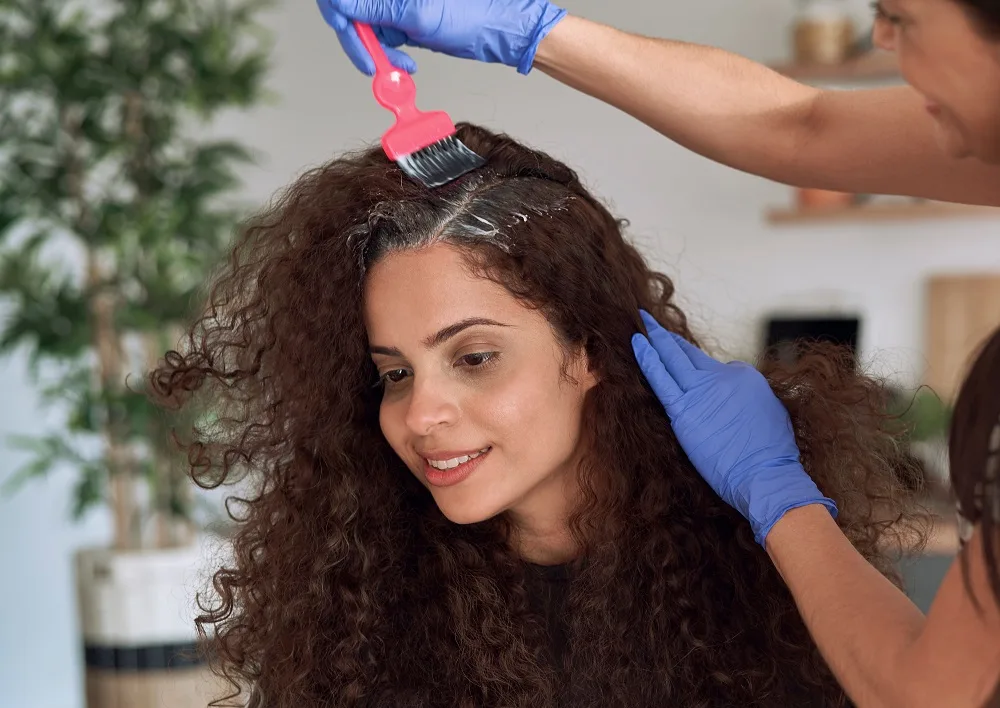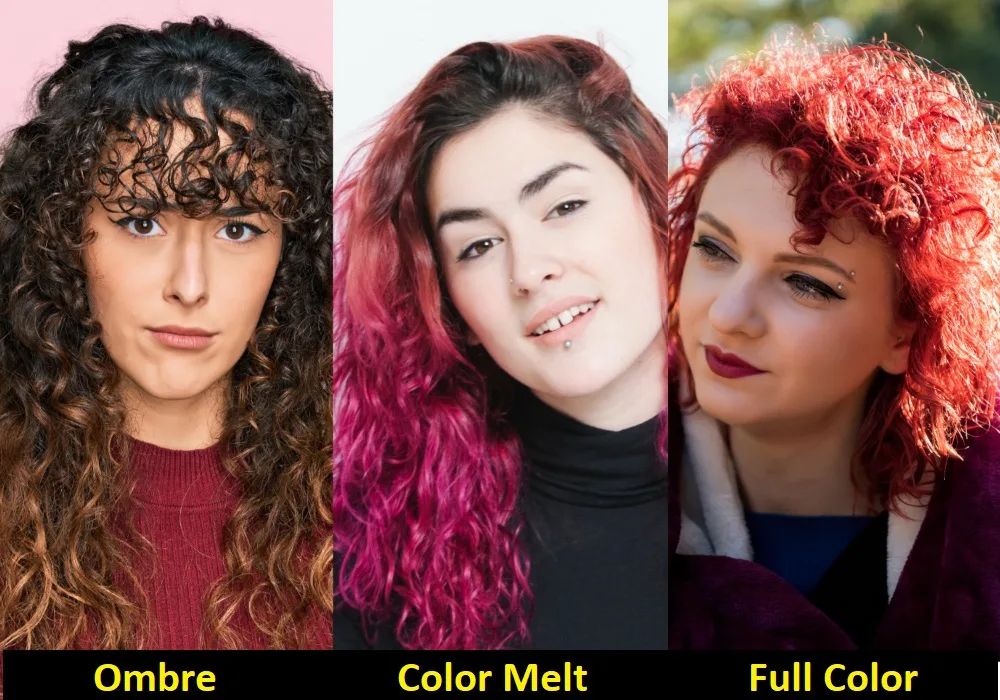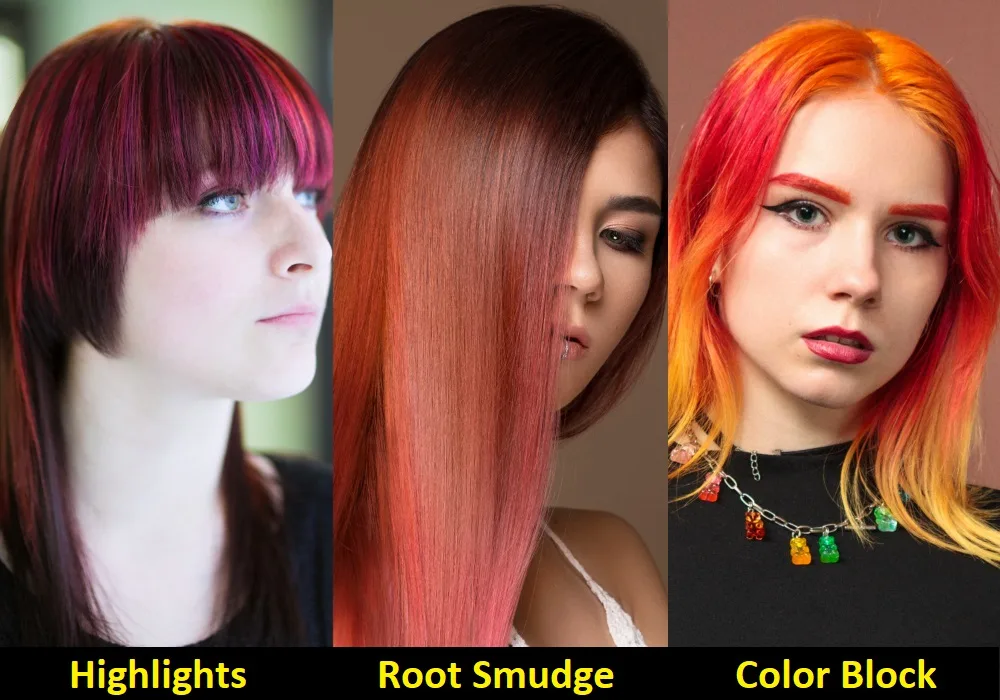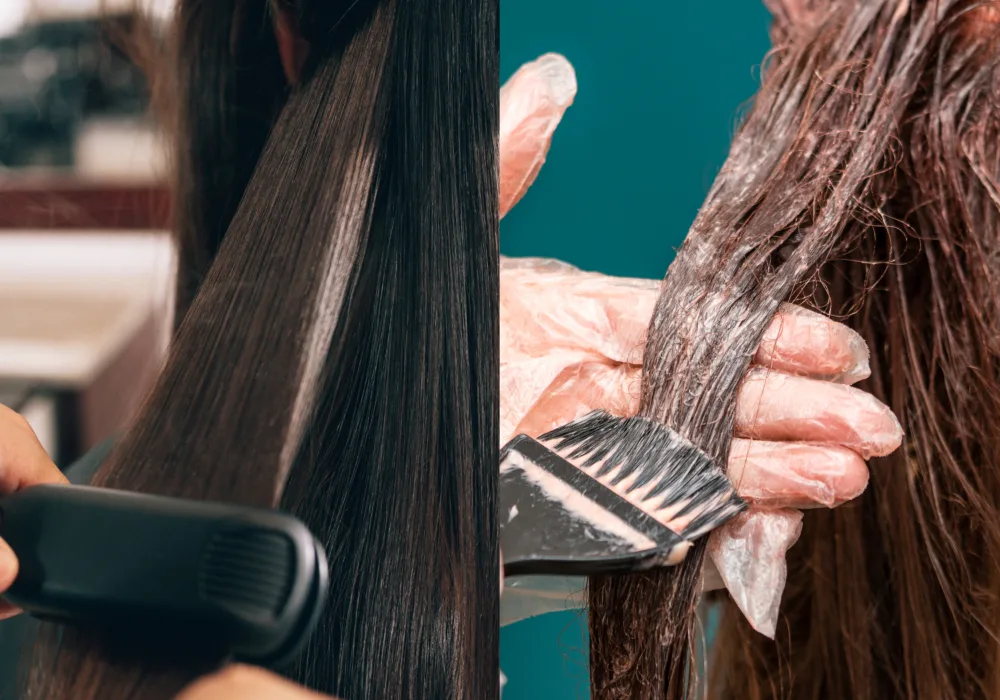Have you ever wondered whether coloring curly or straight hair is easier? While both types of hair require special care when coloring, the process, and results vary depending on whether your locks are wavy or sleek.
In this blog post, we’ll explore the pros and cons of each type of hair to determine which one is easier to work with dye. Let’s plunge into our research!
Is It Easier To Dye Straight Or Curly Hair?
Straight hair will more readily accept color, but not always, depending on particular hair texture. Different coloring or highlighting processes work well on different kinds of hair. For example, cap highlights perform better on straight hair than curly, and balayage is better for those with curly hair.
Curly Hair Coloring

Coloring your curls is a great way to experiment with different colors and shades without compromising your natural curls.
Plus, the added color provides a protective layer against heat styling tools and environmental factors that can harm your hair. However, some challenges come with dyeing those coils.
Before taking the plunge into a new hue, it is essential to factor in how often one would need to visit the salon for touch-ups due to curls’ porosity and propensity for absorbing more product than straight strands.
Curly Hair Coloring Techniques

Some curly hair coloring techniques are:
- Balayage: This is a freehand technique where the color is applied to the hair in a sweeping motion.
- Ombre: Ombre adds depth and dimension to curly hair. It is a technique where the color is darker at the roots and gradually fades into a lighter shade towards the ends.
- Foil highlighting: This method involves wrapping highlighted sections of hair in foil to ensure that the color is evenly distributed.
- Color melting: Color melt is a dyeing process where two or more colors are seamlessly blended to create a natural gradient effect. Works like magic on curls.
- Full-coloring: This technique involves coloring the entire head of hair in one uniform shade.
Straight Hair Coloring

Straight hair is often easier to color than curly or wavy hair, as the dye will spread more evenly across the strands. However, there are still some challenges that come with dyeing straight locks. Here are some of the benefits, challenges, and tips for coloring straight hair:
One of the main advantages of coloring straight hair is that it’s easier to get an even application throughout your strands. This makes it ideal for those who want a uniform color from root to tip without any patchy areas.
However, there are several challenges to keep in mind, including the risk of damage from over-processing and the possibility of discoloration when lightening the straight hair too much.
Coloring hair can be a rewarding experience, but it is crucial to consider the challenges and tips before starting.
Straight Hair Coloring Techniques

- Highlights: This popular technique lightens certain hair strands to add dimension and depth to the overall color.
- Ombre: This technique involves coloring the hair in a gradient from dark at the roots to lighter at the ends.
- Root melt: This technique involves blending the root color into the rest of the hair to create a seamless transition between the roots and the rest of the hair.
- Color blocking: This technique involves adding bold streaks of color to sections of the hair for a dramatic, edgy look.
- Babylights: This technique adds fine highlights to the hair for a natural, sun-kissed look.
Does Dyeing Hair Ruin Curls?
Research shows that dyeing hair can damage curls if not done correctly. The chemicals in hair dye can strip moisture and weaken the hair, causing breakage and frizz, which could affect the curl pattern.
However, using a good quality conditioner after dyeing and avoiding overprocessing can help prevent damage and maintain the curl pattern. It’s best to consult with a professional stylist who has experience with curly hair and can recommend the safest dyeing techniques for your hair type.
I Want To Make My Curly Hair Straight. Should I Straighten or Dye My Hair First?

It is generally recommended to straighten your hair first before dyeing it. This is because the heat from the straightening tool could damage the freshly dyed hair or change its color. Also, properly care for your hair to avoid any potential damage and breakage.
Consult a professional stylist for personalized advice on the best course of action for your hair type and goals.
Related: Curly Hair Vs. Straight Hair
So, Is It Easier To Dye Curly or Straight Hair?
Whether you choose to color your curly hair or straighten it is entirely up to you and depends on your individual preferences and budget.
While coloring curls may require more maintenance than straight hair, others may find that straightening is more time-consuming. Consider what works best for you and your lifestyle when making your decision.
